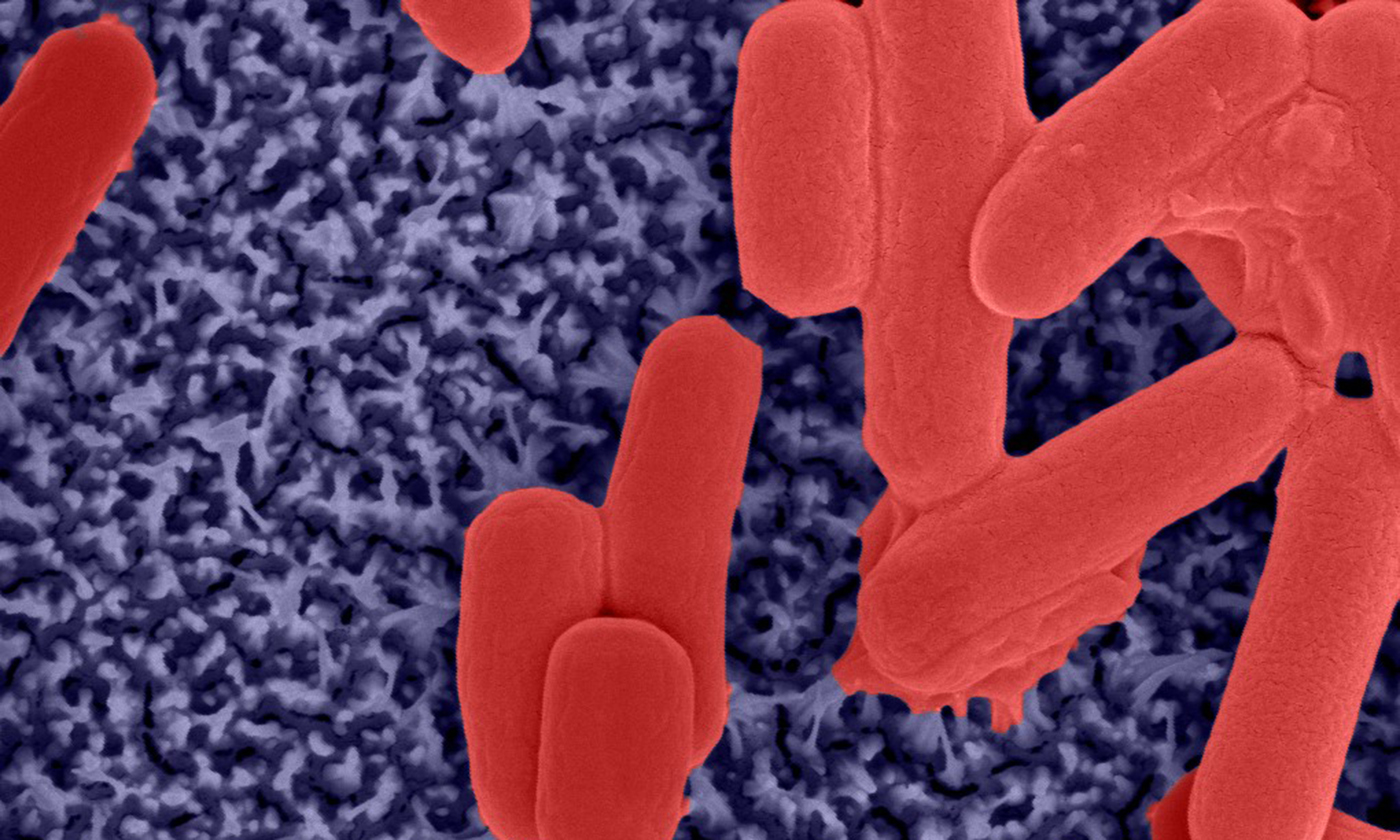 We perform fundamental research and develop technologies for improving human health. Ongoing research includes studies of nanoparticle-biological interactions, cellular mechanics, engineering of proteases and CRISPR-Cas systems, development of new types of sensors, and new materials for biomedical applications.
We perform fundamental research and develop technologies for improving human health. Ongoing research includes studies of nanoparticle-biological interactions, cellular mechanics, engineering of proteases and CRISPR-Cas systems, development of new types of sensors, and new materials for biomedical applications.
Faculty

Carlos Rinaldi-Ramos
Department Chair and Dean’s Leadership ProfessorBiography
MY GROUP STUDIES THE BEHAVIOR AND BIOMEDICAL APPLICATIONS OF MAGNETIC NANOPARTICLES. We combine expertise in synthesis and surface modification of magnetic nanoparticles, physical, chemical, and magnetic characterization, and modelling to understand the colloidal behavior of magnetic nanoparticles, their interaction with biological entities, and to advance their biomedical applications. We are actively investigating novel methods of synthesizing nanoparticles with tailored magnetic properties, evaluating nanoparticle stability and mobility in biological environments, and advancing applications of magnetic nanoparticles in cancer therapy and magnetic particle imaging.
Magnetic particle imaging (MPI) is a new biomedical imaging modality that enables unambiguous, tomographic, and quantitative evaluation of the distribution of magnetic nanoparticles in living subjects. We engineer biocompatible nanoparticle tracers for MPI that offer unprecedented resolution and sensitivity and can be used to track immune cells or image the distribution of biomarkers in pre-clinical models of cancer. We also engineer the surface of tracers to label cells of the innate and adaptive immune system for sensitive and quantitative tracking of their biodistribution. We collaborate with clinicians and other scientists to evaluate the application of MPI for tracking adoptive cell transfer immunotherapies. Students in my group become experts in nanoparticle synthesis, characterization, and evaluation for biomedical applications through highly collaborative, interdisciplinary research projects.
Education
Ph.D., Massachusetts Institute of Technology, 2002
M.S.C.E.P., Massachusetts Institute of Technology, 2001
M.S., Massachusetts Institute of Technology, 2001
B.Sc., University of Puerto Rico, Mayagüez, 1998
Awards & Distinctions
- Fellow, Society of Rheology, 2022
- Doctoral Dissertation Advisor Award, Herbert Wertheim College of Engineering, 2022
- Fellow, American Institute for Medical and Biological Engineering, 2020
- James Y. Oldshue Award, American Institute of Chemical Engineers and Interamerican Confederation of Chemical Engineers, 2019
- University of Florida Term Professorship, 2017-2020
- Charles A. Stokes Term Professorship, 2015-2018
- Presidential Early Career Award for Scientists and Engineers (PECASE), 2006
- National Science Foundation Early Career Award for Scientists and Engineers (CAREER Award), 2006
selected Publications
- Mythreyi Unni, Lorena Maldonado, Shehaab Savliwala, Brittany Partain, Pawel Grybos, Anna Koziol, Piotr Maj, Robert Szczygiel, Qingteng Zhang, Eric M. Dufresne, Alec Sandy, Suresh Narayanan, Kyle Allen, and Carlos M. Rinaldi-Ramos, “Fast nanoparticle rotational and translational diffusion in synovial fluid and hyaluronic acid solutions.” Science Advances, 7, eabf8467, 2021. [https://doi.org/10.1126/sciadv.abf8467]
- Angelie Rivera-Rodriguez and Carlos M. Rinaldi-Ramos, “Emerging biomedical applications based on the response of magnetic nanoparticles to time-varying magnetic fields.” Annual Reviews in Chemical and Biomolecular Engineering, 12:20.1-20.23, 2021. [https://doi.org/10.1146/annurev-chembioeng-102720-015630]
- Angelie Rivera-Rodriguez, Lan B. Hoang-Minh, Andreina Chiu-Lam, Leyda Marrero-Morales, Duane A. Mitchell, and Carlos M. Rinaldi-Ramos, “Tracking adoptive T cell immunotherapy using magnetic particle imaging.” Nanotheranostics, 5(4):431-444, 2021. [https://doi.org/10.7150/ntno.55165]
- Andreina Chiu Lam, Edward Staples, Carl Pepine, and Carlos Rinaldi, “Perfusion, cryopreservation, and nanowarming of whole hearts using colloidally stable cryopreservation agent solutions.” Science Advances, 7(2):eabe3005, 2021. [https://doi.org/10.1126/sciadv.abe3005]
- Zhi Wei Tay, Prashant Chandrasekharan, Andreina Chiu-Lam, Daniel Hensley, Rohan Dhavalikar, Xinyi Zhou, Elaine Yu, Patrick Goodwill, Bo Zheng, Carlos Rinaldi, Steven M. Conolly, “Magnetic Particle Imaging Guided Heating In Vivo using Gradient Fields For Arbitrary Localization of Thermal Therapy.” ACS Nano, 12(4):3699-3713, 2018. [http://doi.org/10.1021/acsnano.8b00893]
- Lorena P. Maldonado-Camargo, Chuncheng Yang, and Carlos Rinaldi, “Scale-dependent rotational diffusion of nanoparticles in polymer solutions.” Nanoscale, 9(33):12039-12050, 2017. [doi:10.1039/C7NR01603D]
- Mythreyi Unni, Amanda Uhl, Shehaab Savliwala, Benjamin Savitzky, Roham Dhavalikar, Nicolas Garraud, David Arnold, Lena Kourkoutis, Jennifer Andrew, and Carlos Rinaldi, “Thermal decomposition synthesis of iron oxide nanoparticles with diminished magnetic dead layer by controlled addition of oxygen.” ACS Nano, 11(2):2284-2303, 2017. [doi: 10.1021/acsnano.7b00609]
- Lorena P. Maldonado-Camargo and Carlos Rinaldi, “Breakdown of the Stokes-Einstein relation for the rotational diffusivity of polymer grafted nanoparticles in polymer melts.” Nano Letters, 16:6767-6773, 2016. [doi: 10.1021/acs.nanolett.6b02359]
- Camilo Velez, Isaac Torres-Díaz, L.P. Maldonado-Camargo, Carlos Rinaldi, and David P. Arnold, “Magnetic assembly and crosslinking of nanoparticles for releasable magnetic microstructures.” ACS Nano, 9(10):10165-10172, 2015. [doi: 10.1021/acsnano.5b03783]
- Maribella Domenech, Ileana Marrero-Berrios, Madeline Torres-Lugo, and Carlos Rinaldi, “Lysosomal Membrane Permeabilization by Targeted Magnetic Nanoparticles in Alternating Magnetic Fields.” ACS Nano, 7(6):5091-5101, 2013. [doi: 10.1021/nn4007048]
- Mar Creixell, Ana C. Bohorquez, Madeline Torres-Lugo, and Carlos Rinaldi, “EGFR-targeted magnetic nanoparticle heaters can kill cancer cells without a perceptible temperature rise.” ACS Nano, 5(9), 7124-7129, 2011. [doi: 10.1021/nn201822b]
